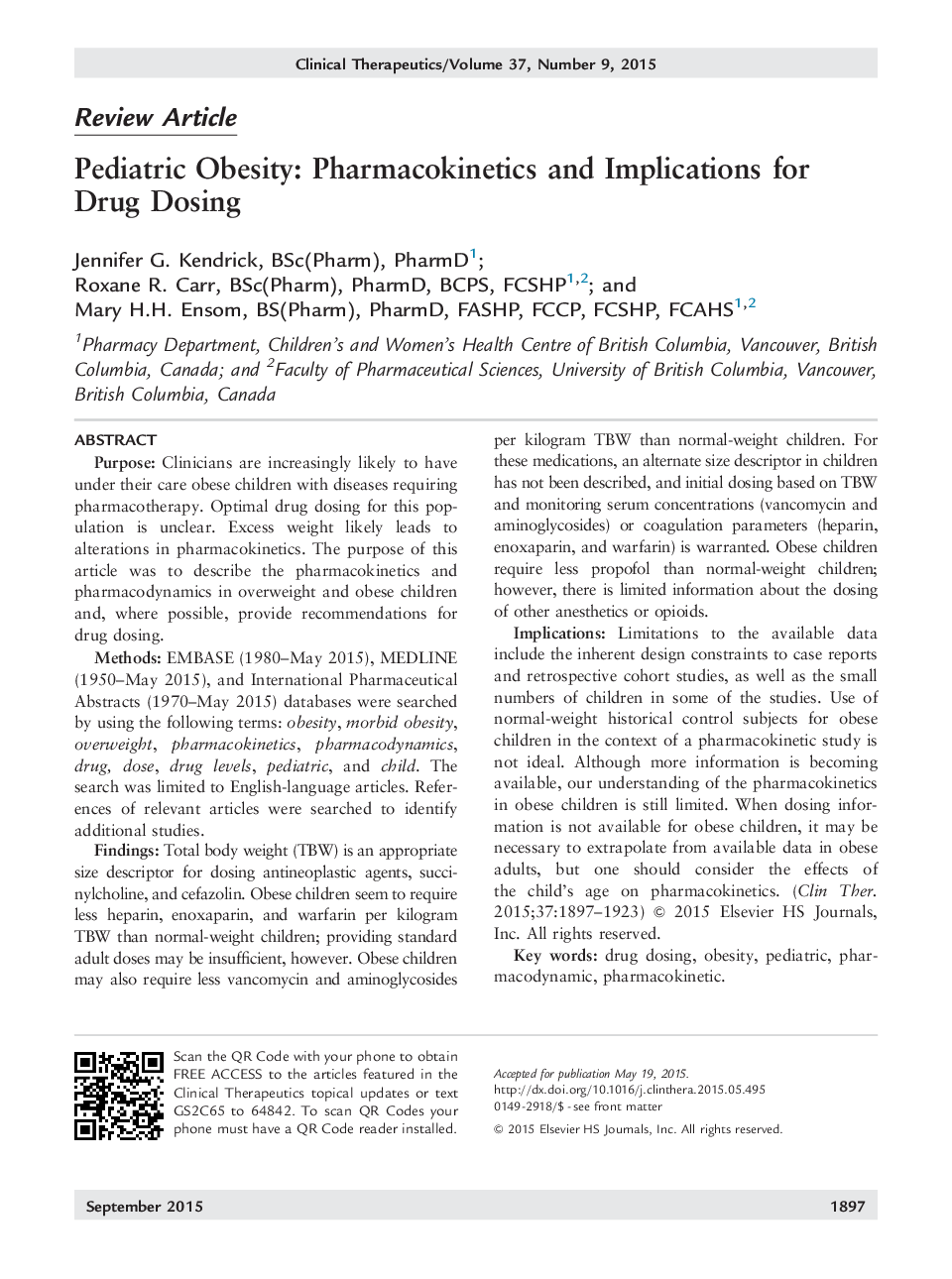| کد مقاله | کد نشریه | سال انتشار | مقاله انگلیسی | نسخه تمام متن |
|---|---|---|---|---|
| 5825141 | 1119888 | 2015 | 27 صفحه PDF | دانلود رایگان |
PurposeClinicians are increasingly likely to have under their care obese children with diseases requiring pharmacotherapy. Optimal drug dosing for this population is unclear. Excess weight likely leads to alterations in pharmacokinetics. The purpose of this article was to describe the pharmacokinetics and pharmacodynamics in overweight and obese children and, where possible, provide recommendations for drug dosing.MethodsEMBASE (1980-May 2015), MEDLINE (1950-May 2015), and International Pharmaceutical Abstracts (1970-May 2015) databases were searched by using the following terms: obesity, morbid obesity, overweight, pharmacokinetics, pharmacodynamics, drug, dose, drug levels, pediatric, and child. The search was limited to English-language articles. References of relevant articles were searched to identify additional studies.FindingsTotal body weight (TBW) is an appropriate size descriptor for dosing antineoplastic agents, succinylcholine, and cefazolin. Obese children seem to require less heparin, enoxaparin, and warfarin per kilogram TBW than normal-weight children; providing standard adult doses may be insufficient, however. Obese children may also require less vancomycin and aminoglycosides per kilogram TBW than normal-weight children. For these medications, an alternate size descriptor in children has not been described, and initial dosing based on TBW and monitoring serum concentrations (vancomycin and aminoglycosides) or coagulation parameters (heparin, enoxaparin, and warfarin) is warranted. Obese children require less propofol than normal-weight children; however, there is limited information about the dosing of other anesthetics or opioids.ImplicationsLimitations to the available data include the inherent design constraints to case reports and retrospective cohort studies, as well as the small numbers of children in some of the studies. Use of normal-weight historical control subjects for obese children in the context of a pharmacokinetic study is not ideal. Although more information is becoming available, our understanding of the pharmacokinetics in obese children is still limited. When dosing information is not available for obese children, it may be necessary to extrapolate from available data in obese adults, but one should consider the effects of the child's age on pharmacokinetics.
Journal: Clinical Therapeutics - Volume 37, Issue 9, 1 September 2015, Pages 1897-1923
